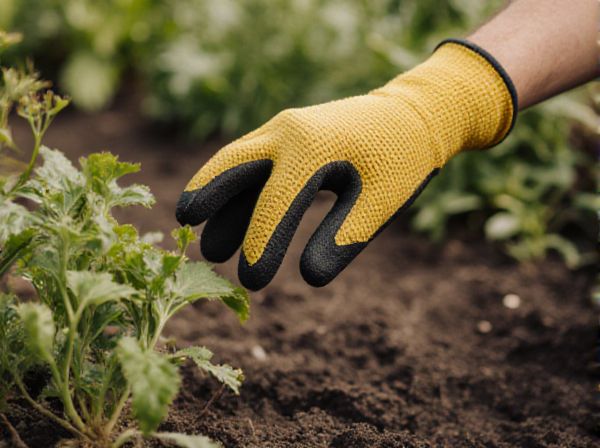
Drought gardening vs Rain gardening Illustration
Drought gardening uses native, drought-resistant plants to minimize water consumption and thrive in arid conditions, making it ideal for regions facing water scarcity. Rain gardening captures and filters rainwater runoff through carefully selected plants and soil, reducing erosion and improving groundwater recharge in wetter climates. Both methods promote sustainable landscaping by enhancing resilience to local climate variations while conserving resources.
Table of Comparison
| Aspect | Drought Gardening | Rain Gardening |
|---|---|---|
| Water Usage | Minimal; relies on dry-tolerant plants | Captures and utilizes rainwater runoff |
| Plant Selection | Drought-resistant species like succulents, cacti | Native moisture-loving plants suited for wet soils |
| Soil Requirement | Well-drained, sandy or rocky soils preferred | Loamy soils with good infiltration ability |
| Climate Suitability | Arid and semi-arid climates | Regions with moderate to heavy rainfall |
| Environmental Benefits | Reduces water consumption; supports drought-resilient ecosystems | Improves stormwater management; reduces flooding and erosion |
| Maintenance | Low; occasional watering during extreme droughts | Moderate; weed control and sediment removal |
| Overall Goal | Maximize plant survival in low-water conditions | Manage rainwater sustainably and enhance biodiversity |
Understanding Drought Gardening: Key Principles
Drought gardening emphasizes the use of native, drought-tolerant plants that require minimal water to thrive, reducing reliance on irrigation and conserving water resources. Techniques such as mulching, soil amendment with organic matter, and strategic plant placement optimize moisture retention and root development. This approach aligns with sustainable landscaping practices, promoting resilience against prolonged dry spells and climate variability.
The Basics of Rain Gardening Explained
Rain gardening involves designing landscapes to capture and absorb rainwater, reducing runoff and replenishing groundwater, which contrasts with drought gardening focused on water conservation through drought-tolerant plants and minimal irrigation. Rain gardens use native plants adapted to local hydrology, improving soil health and supporting biodiversity while mitigating flood risks. This sustainable practice enhances urban resilience by filtering pollutants and managing stormwater sustainably.
Comparing Soil Needs: Drought vs. Rain Gardens
Drought gardens require soil with excellent drainage and high organic matter content to retain minimal moisture and support drought-tolerant plants. Rain gardens, in contrast, rely on soil with moderate permeability to absorb and filter stormwater runoff effectively, preventing erosion and improving groundwater recharge. Understanding these distinct soil needs is critical for optimizing plant health and sustainable water management in each garden type.
Plant Selection for Drought-Resistant Gardens
Selecting plants for drought-resistant gardens involves choosing species with deep root systems and low water requirements, such as succulents, lavender, and native grasses. These plants thrive by efficiently storing water and minimizing transpiration, making them ideal for dry climates and water-scarce regions. Incorporating drought-tolerant varieties reduces irrigation needs and promotes sustainable landscaping in areas prone to prolonged drought conditions.
Ideal Plants for Thriving Rain Gardens
Ideal plants for thriving rain gardens include native grasses, sedges, and moisture-loving perennials like carex, joe-pye weed, and blue flag iris, which efficiently absorb and filter stormwater. These species are well-adapted to fluctuating water levels and help reduce soil erosion while supporting local biodiversity. Selecting drought-tolerant plants is crucial for drought gardening, but rain gardens require hydrophilic plants that thrive in saturated soils for optimal water management.
Water Management Strategies: Efficient Use vs. Excess Capture
Drought gardening emphasizes water management strategies that maximize efficient use by selecting drought-tolerant plants and implementing drip irrigation to minimize water loss. Rain gardening focuses on capturing and utilizing excess rainwater through permeable soil and basin designs that reduce runoff and promote groundwater recharge. Both approaches aim to optimize water resources but differ in prioritizing conservation versus excess water capture for sustainability in varying climate conditions.
Maintenance Differences: Drought vs. Rain Gardens
Drought gardens require minimal irrigation and rely on drought-tolerant plants that thrive in low-moisture soils, significantly reducing water use and maintenance frequency. Rain gardens, designed to capture and filter stormwater runoff, need occasional monitoring to prevent sediment buildup and maintain plant health in fluctuating moisture conditions. While drought gardens emphasize water conservation through resilience, rain gardens focus on managing water flow and improving local water quality with moderate upkeep.
Climate Suitability: Choosing the Right Garden for Your Region
Drought gardening thrives in arid or semi-arid climates by utilizing drought-tolerant plants that require minimal water, making it ideal for regions experiencing prolonged dry spells or water restrictions. Rain gardening suits areas with moderate to high rainfall, capturing and filtering stormwater runoff through native plants that enhance soil absorption and reduce erosion. Selecting the appropriate garden type based on regional precipitation patterns and soil conditions ensures sustainable water management and promotes ecological resilience.
Environmental Impact and Benefits of Each Approach
Drought gardening conserves water by utilizing native, drought-resistant plants that require minimal irrigation, significantly reducing water consumption and promoting soil health in arid regions. Rain gardening captures and filters stormwater runoff using native vegetation, enhancing groundwater recharge and reducing pollutants entering waterways, thus supporting local ecosystems. Both approaches mitigate environmental stress, with drought gardening preserving scarce water resources and rain gardening improving water quality and reducing flood risks.
Designing Your Garden: Drought or Rain—Which Fits Your Landscape?
Drought gardening emphasizes selecting native, drought-tolerant plants that thrive with minimal water, reducing irrigation needs and conserving resources. Rain gardening focuses on capturing and absorbing rainwater through strategically placed depressions planted with water-loving species, mitigating runoff and improving soil health. Assess soil type, local climate patterns, and water availability to determine whether a drought-resistant or rain-capturing garden design best suits your landscape's sustainability goals.
Drought gardening vs Rain gardening Infographic

 gardendif.com
gardendif.com